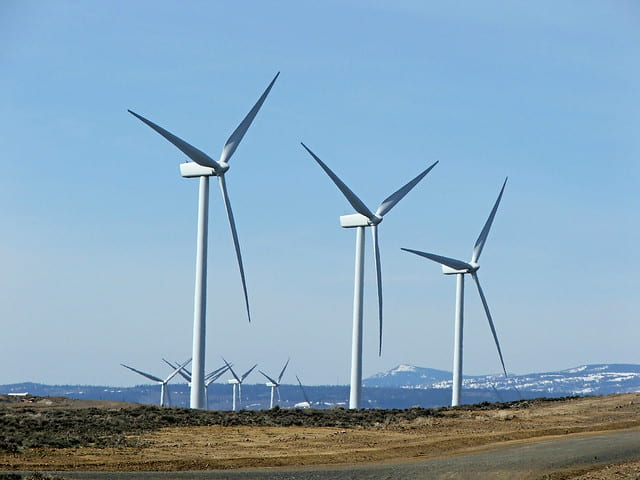by Carolyn Kissane
This piece was originally published on The Hill.

Offshore wind is coming to New York. Last month New Jersey, in what was then the largest offshore wind procurement in the United States, announced a 1.1 gigawatts project off the coast of Atlantic City. The bid went to Orsted.
Not to be outdone, New York State then announced the largest offshore wind power project, with two new projects totally over 1.7 gigawatts. New York State aims to have 9 gigawatts (9000 MW) of wind by 2035, an ambitious target; the state is starting at zero.
Three companies share New York State’s offshore wind bids. Norway’s Equinor gets to build out Empire Wind with 60 to 80 wind turbines off the southeast coast of Long Island with 816 megawatts of production. Sunrise Wind, a joint venture between Denmark’s Orsted and U.S.-energy company Eversource, will build out 880 megawatts 30 miles off of Montauk Point. All in, a lot of new wind turbines are coming to New York.
New York Governor Cuomo this week signed into law a new bill ramping up the state’s climate goals. Sitting next to Al Gore, Cuomo committed his state to reducing greenhouse gases 85 percent by 2050, a 5 percent increase from earlier targets, and now the most ambitious CO2 reduction of any state, even surpassing California.
New York workers will also benefit from these new energy projects. Building out New York’s wind energy vision requires new transmission infrastructure, wind-ready offshore ports and skilled workers who can install and manage the turbines. And those are just the big areas of need. Many other opportunities will emerge from this build-out. The Empire and Sunrise projects will employ 1600 people, not including ancillary services, which will also see growth.
Offshore wind is big news for New York, representing a turning point in the state’s energy landscape. New York envisions being a leader in renewable energy. Its targets suggest large ambitions.
By 2040, New York State pledges to make its electricity system 100 percent carbon-free. Today the state depends on natural gas, nuclear, hydro, some fuel oils and renewables to keep the state powered.
New York’s green energy vision represents part of what is a full-fledged energy transition away from fossil fuels towards renewable sources of energy. Getting to 100 percent renewable energy, or even 50 percent, requires profound structural change in the energy system, and building out offshore wind will illustrate the challenges associated with new infrastructure development.
Two of the three companies involved in New York State’s wind energy transition are also going through significant changes in their operations and branding. Only a decade ago, both companies depended almost entirely on the production and sale of fossil fuels. Orsted, formerly known as Danish Oil and Gas, changed its name in 2017 and almost immediately sold off its coal assets and began divesting out of its upstream oil and gas.
One year later, Norway’s Statoil changed its name to Equinor. Both companies have moved towards green re-branding and adding significant renewable energy assets to their portfolios. Orsted is working towards eliminating all of its fossil fuel assets, and being a completely green energy company, first by ridding itself of all coal and then eventually oil and natural gas. Equinor will retain its oil and gas production and sales, but is also starting to make deep footprints globally in the offshore wind and solar space. Equinor aims to reduce its annual emissions by three million tons through 2030.
Both companies face challenges beyond needing the wind to blow. There will be the challenges of regulatory hurdles, building out offshore transmission lines and working in a region that has no experience with wind power. Both companies have experience building large-scale offshore wind projects. Orsted owns and operates the 30 MW off of Block Island in addition to projects around the world, and Equinor is establishing itself as a heavy hitter in the wind sector with projects in the United Kingdom and Germany. Globally, there are around 27 gigawatts of offshore wind, with 18 gigawatts in Europe alone.
New York is dreaming big. Empire Wind and Sunrise Wind are just the beginning of what we will see over the next decade.
Carolyn Kissane is academic director and clinical professor of global affairs at the Center for Global Affairs at NYU School of Professional Studies. She is a non-resident fellow at the Payne Institute for Earth Resources.
